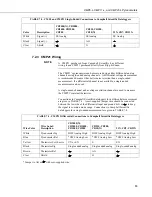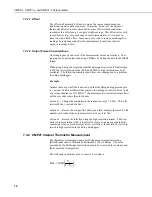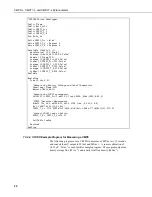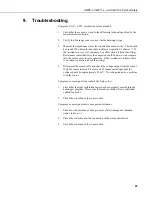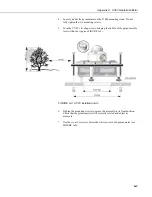
CMP6-L, CMP11-L, and CMP21-L Pyranometers
FIGURE 8-2. Changing the desiccant
8.3 Check Sensor Output
It is also important to check the data returned from the sensor as it will show
the first indication of a fault. When doing this you should be aware of several
expected phenomena that can cause strange measurements. In particular on
clear, windless nights the outer dome temperature of horizontally placed
pyranometers can fall as low as the dew point temperature of the air, due to
infrared radiation exchange with the cold sky. (The effective sky temperature
can be 30°C lower than the ground temperature, which results in an infra-red
emission of –150 W
•
m
–2
). If this happens, dew, glazed frost or hoar frost can
be precipitated on the top of the outer dome and can stay there for several hours
in the morning. An ice cap on the dome is a strong diffuser and can increase
the pyranometer signal by up to 50% in the first hours after sunrise.
8.4 Recalibration
The calibration of the pyranometer may drift with time and exposure to
radiation. Recalibration every two years is recommended. The sensor should
be returned to Campbell Scientific for recalibration. A Returned Materials
Authorization (RMA) is required (refer to the Assistance page for more
information).
24
Содержание CMP11-L
Страница 2: ......
Страница 8: ...Table of Contents iv ...
Страница 34: ...CMP6 L CMP11 L and CMP21 L Pyranometers 26 ...
Страница 40: ...Appendix A CVF3 Heater Ventilator A 6 ...
Страница 41: ......




